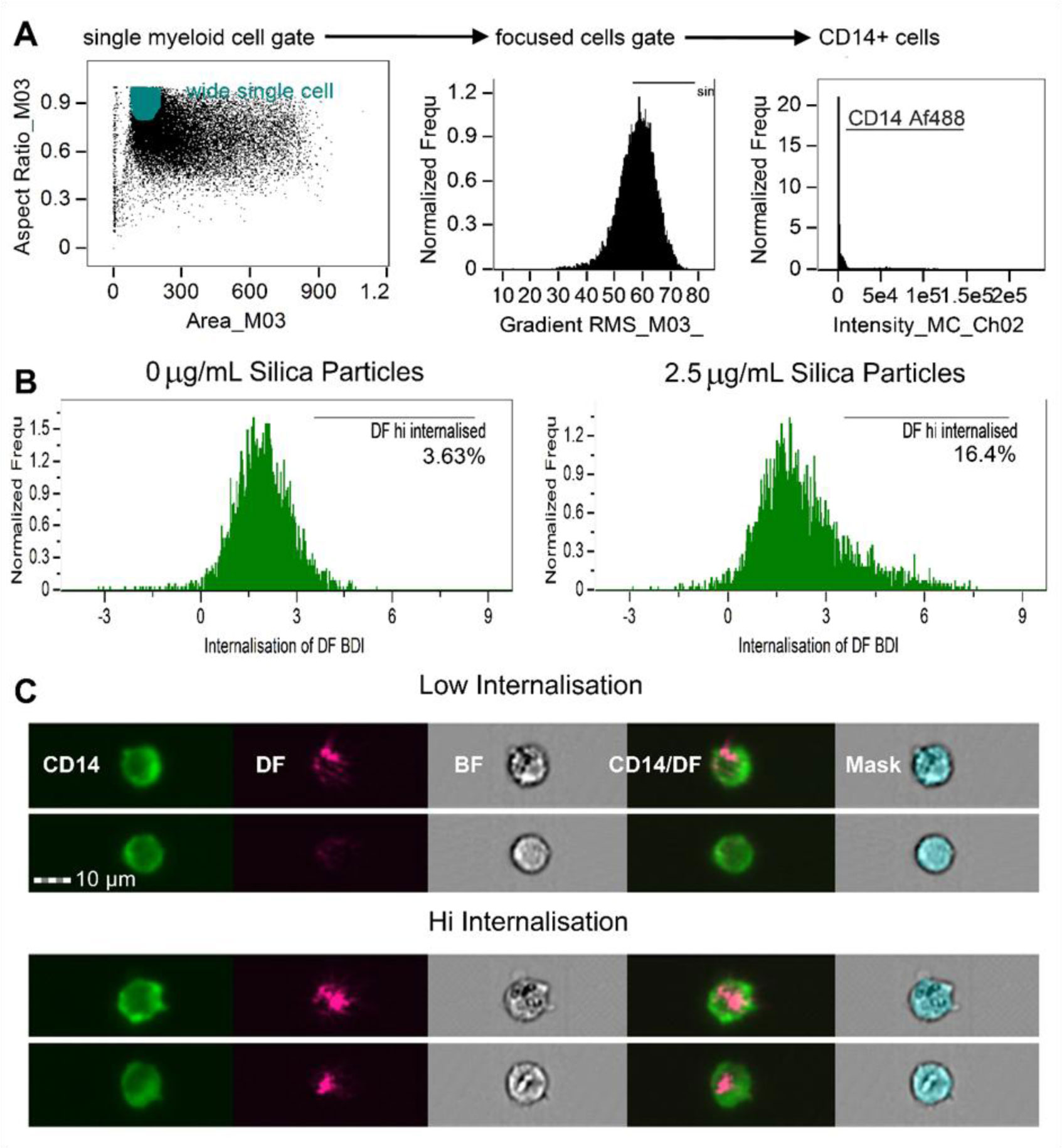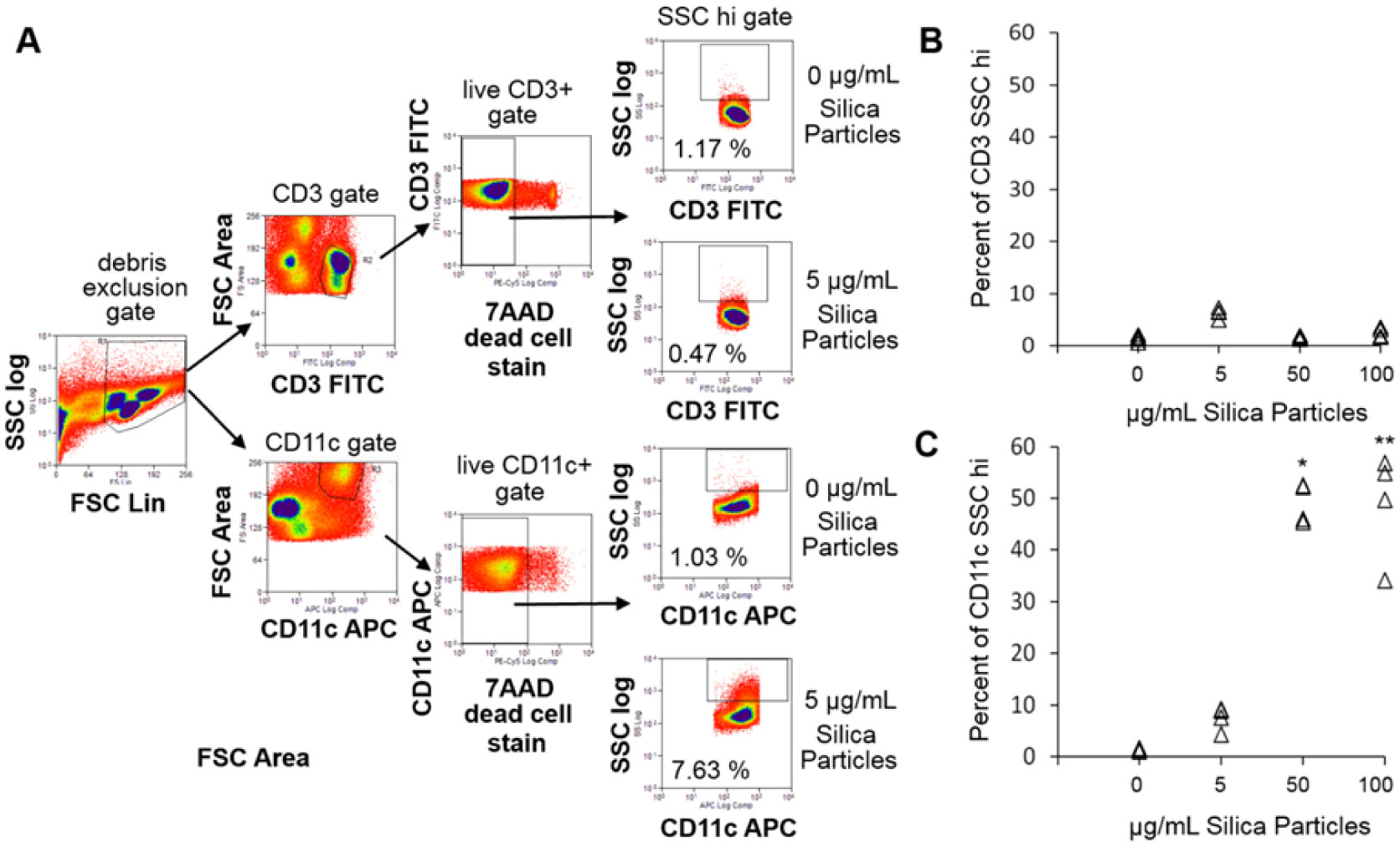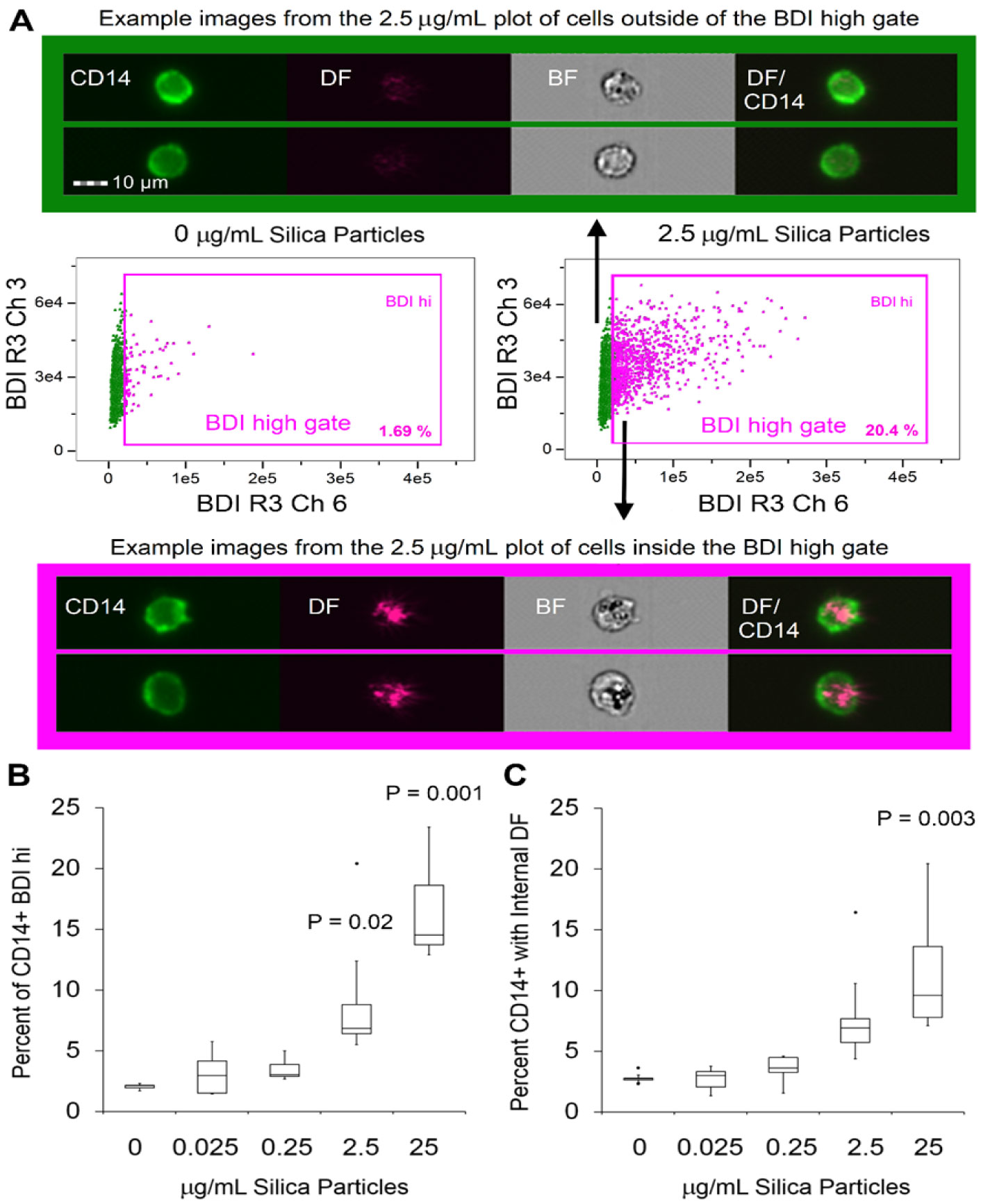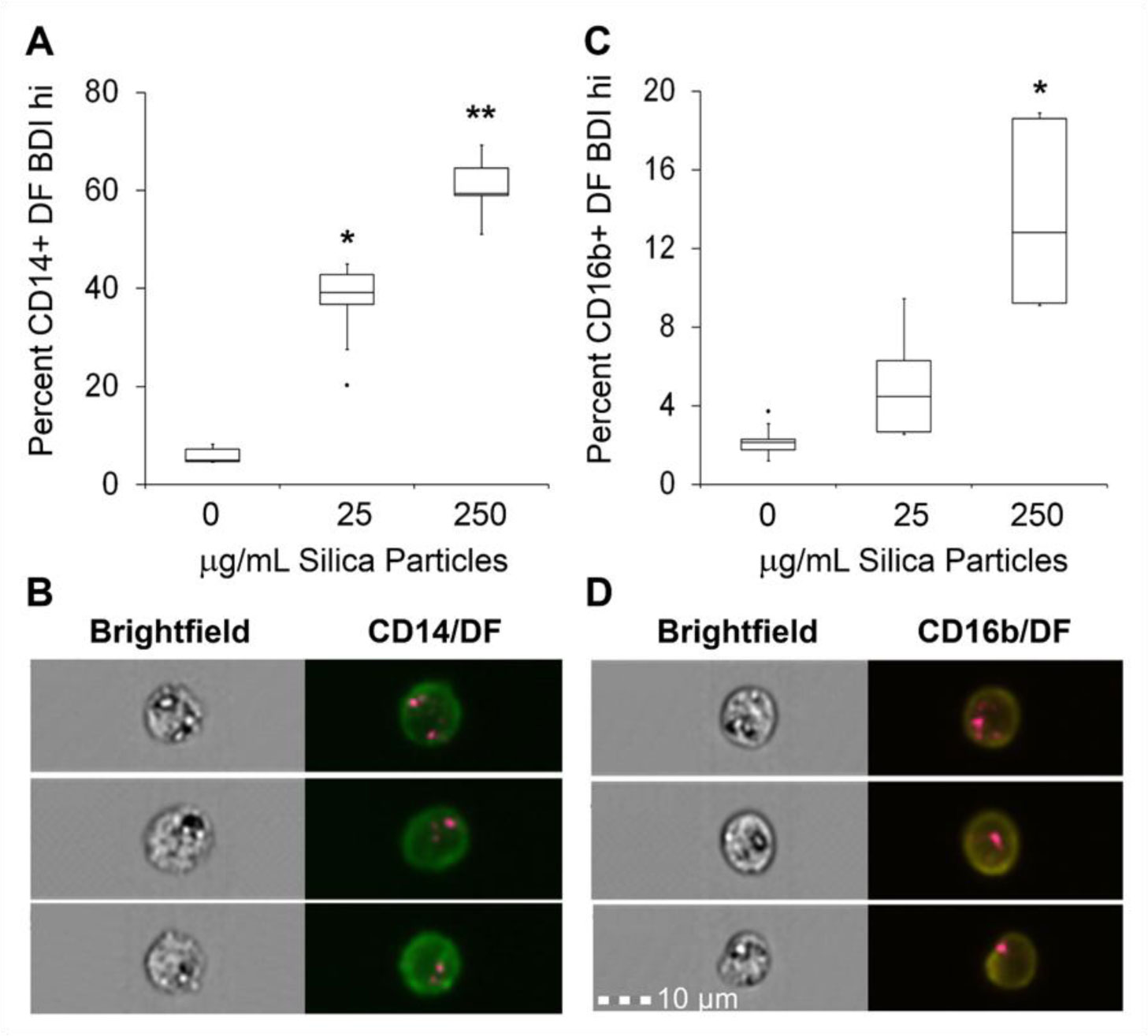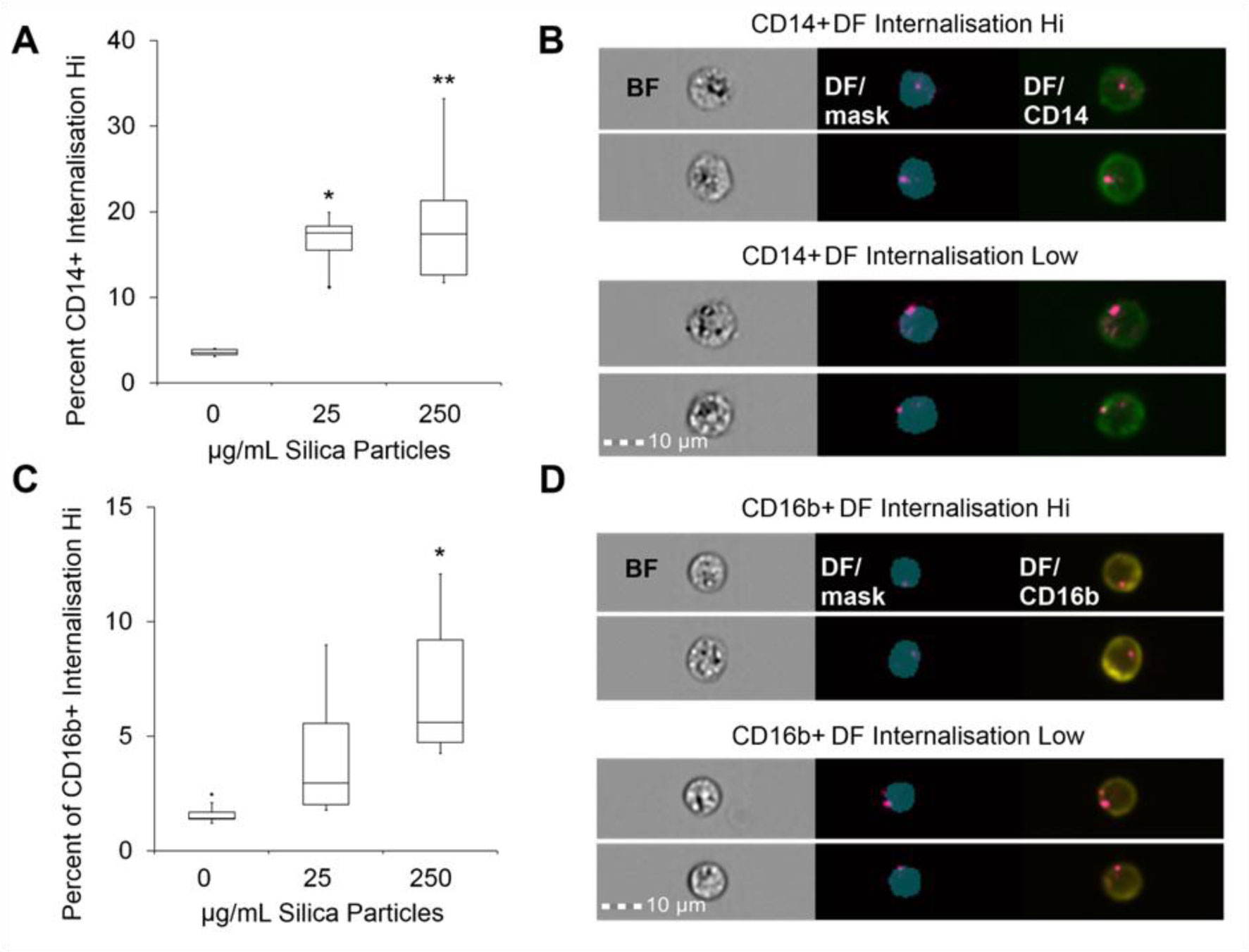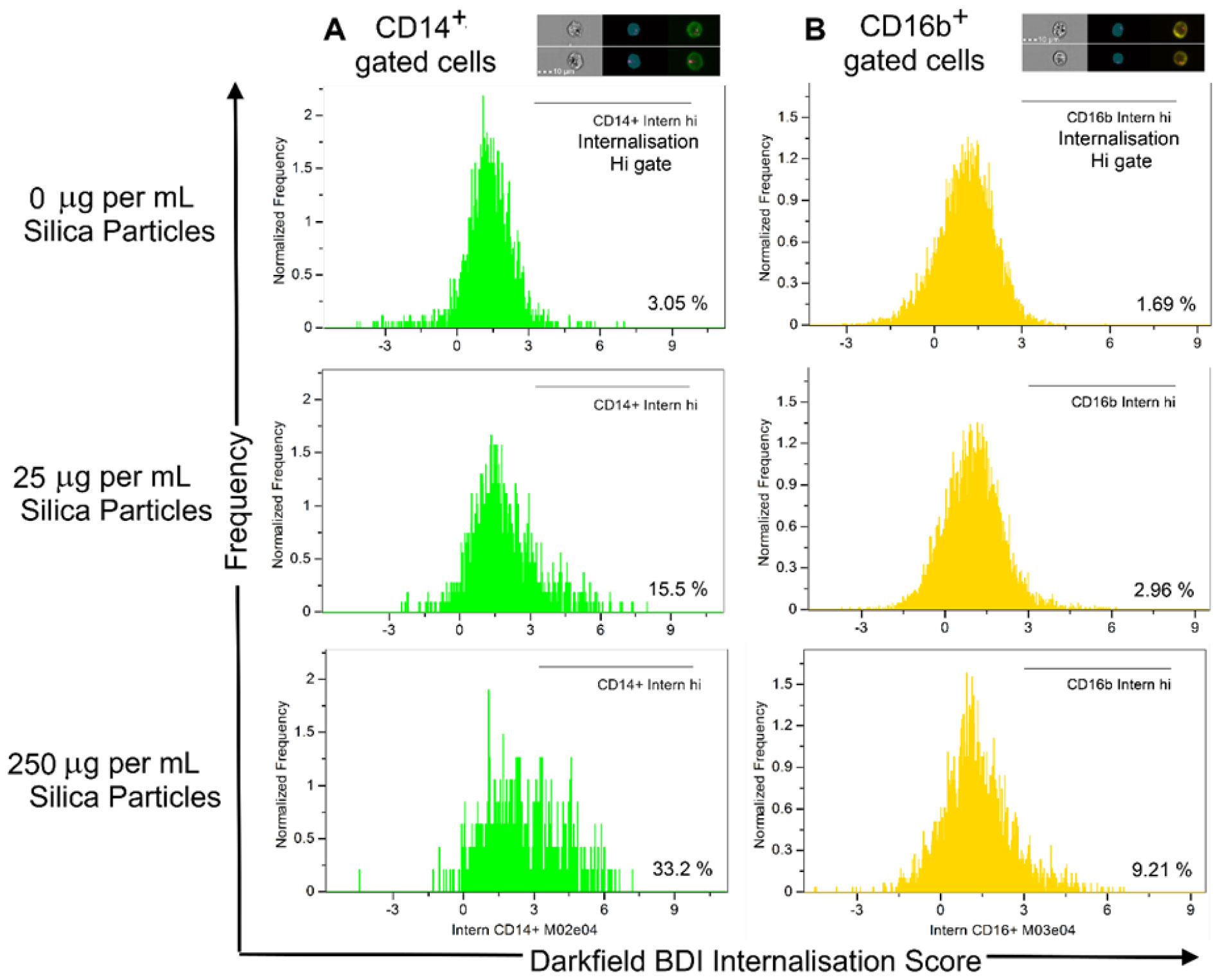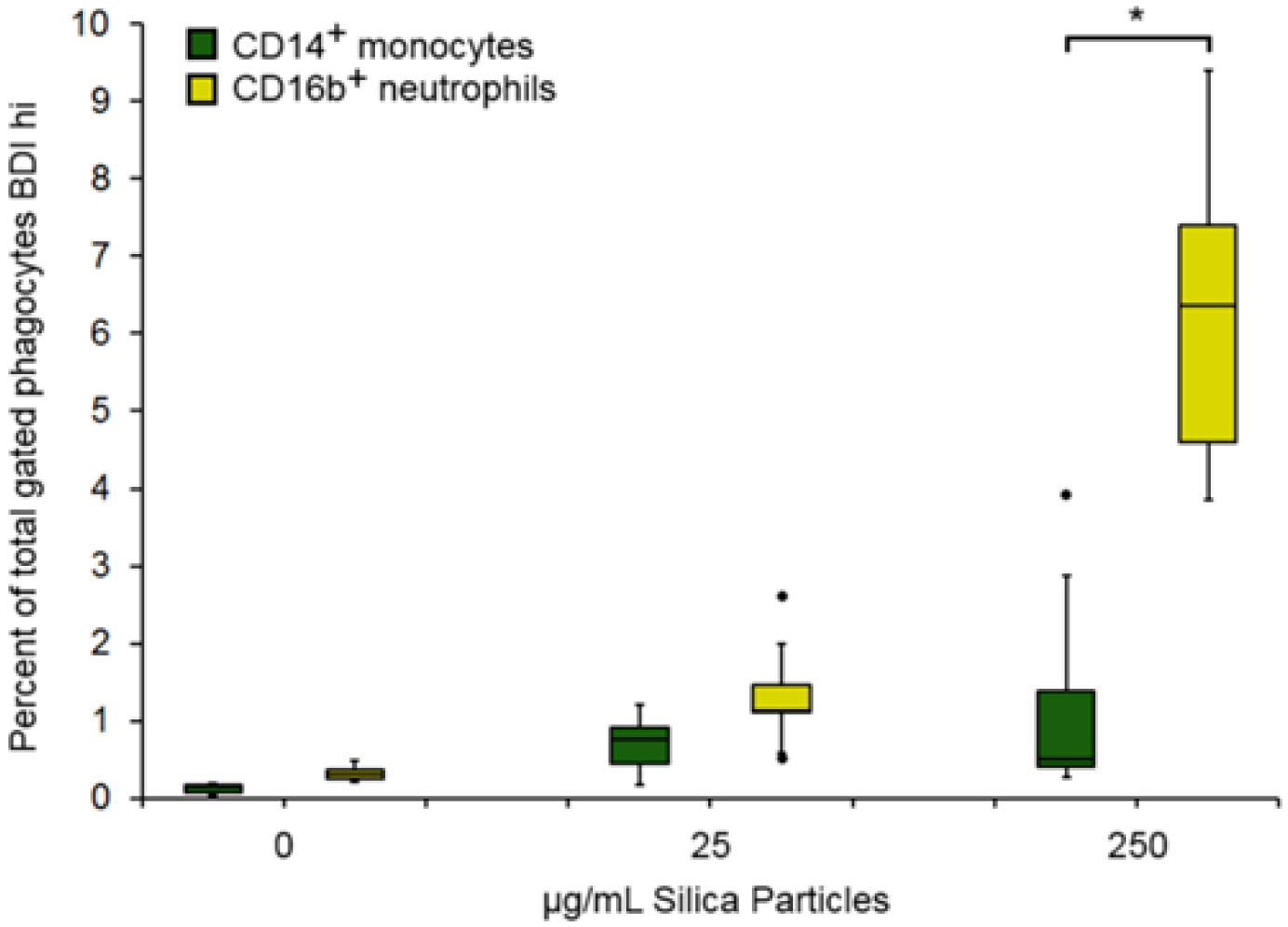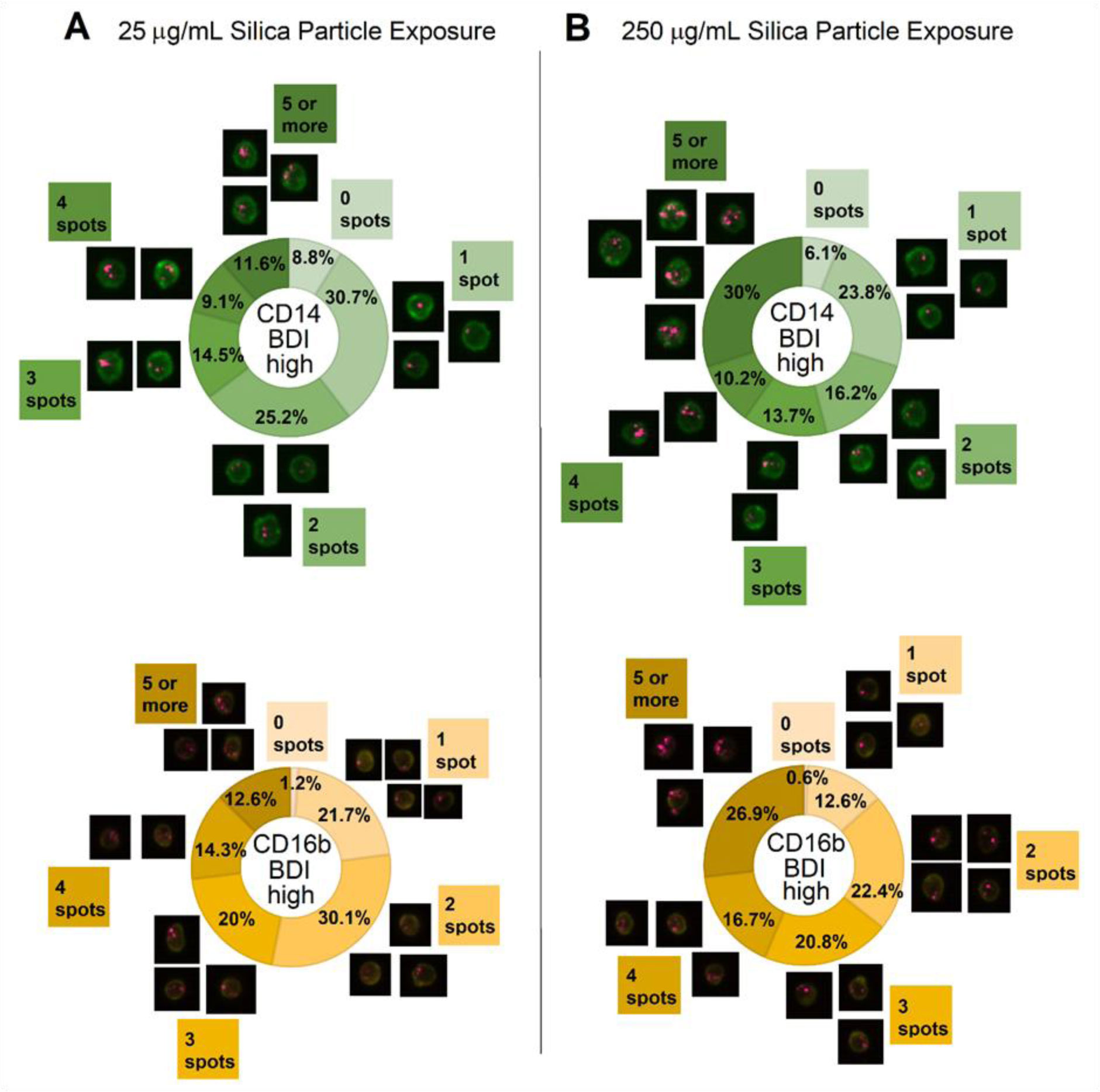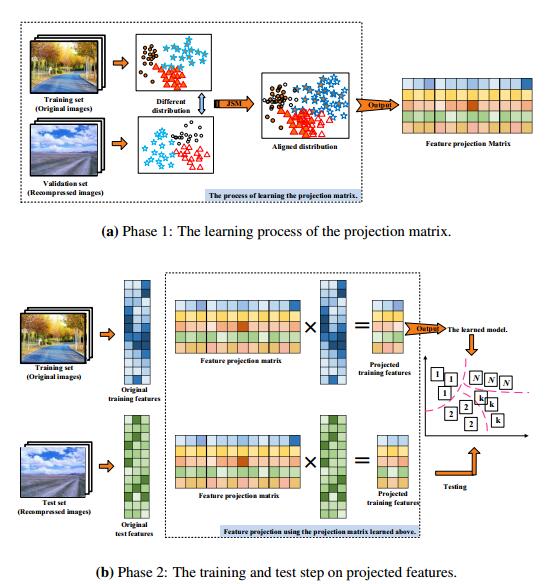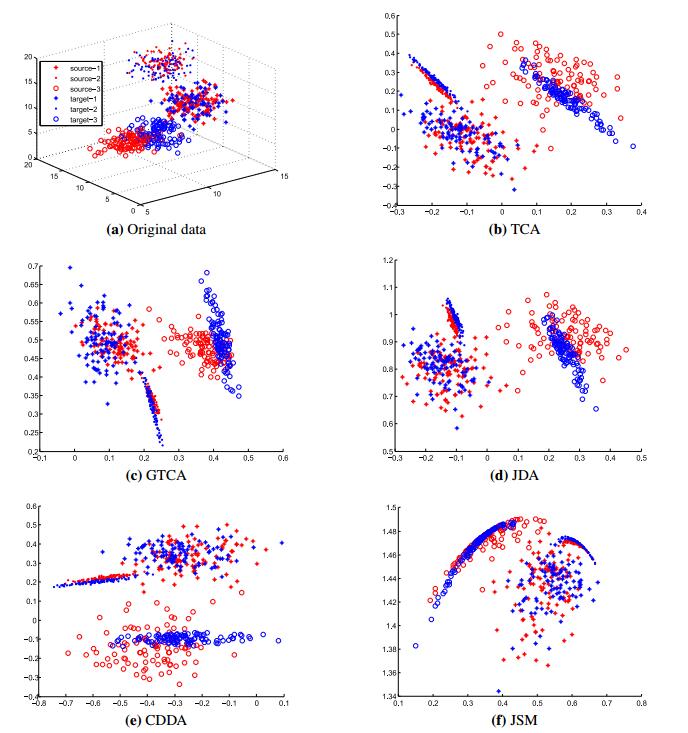Source camera identification has been well studied in laboratory environment where the training and test samples are all original images without recompression. However, image compression is quite common in the real world, when the training and test images are double JPEG compressed with different quantization tables, the identification accuracy of existing methods decreases dramati- cally. To address this challenge, we propose a novel iterative algorithm namely joint first and second order statistics matching (JSM) to learn a feature projection that projects the training and test fea- tures into a low dimensional subspace to reduce the shift caused by image recompression. Inspired by transfer learning, JSM aims to learn a new feature representation from original feature space by simultaneously matching the first and second order statistics between training and test features in a principled dimensionality reduction procedure. After the feature projection, the divergence between training and test features caused by recompression is reduced while the discriminative properties are preserved. Extensive experiments on public Dresden Image Database verify that JSM significantly outperforms several state-of-the-art methods on camera model identification of recompressed images.
1.
Introduction
Quartz is a common form of crystalline silica and is a major component of rocks, sands, and soils [1]. Exposure to quartz most commonly occurs during occupational activities involving the movement of earth, disturbance of silica-containing products, or during use or manufacturing of silica-containing products. Respirable size crystalline silica dust particles are defined as particles around 10 µm in diameter and under, but are primarily considered to be outside of the nanoparticulate size range [2]. Respirable silica particles generated during occupational activities are inhaled and deposited in the lung. Epidemiological studies have shown that inhalation of quartz dust is associated with silicosis, lung cancer, and pulmonary tuberculosis [3]. After inhalation and deposition in lung alveoli, macrophages phagocytose the crystalline silica particles and an inflammatory response is induced which, in turn, stimulates a process termed silicosis [4]. In addition to the development of silicosis, chronic exposure to crystalline silica increases the prevalence of several autoimmune states, including systemic sclerosis, rheumatoid arthritis and anti-neutrophil cytoplasmic antibody-related vasculitis [5]. Despite substantial links between the autoimmune states and crystalline silica dust exposure, the role of the particles in the initiation and development of autoimmunity is not well understood [4],[6]–[9]. The lack of understanding is due, in part, to a lack of animal models that precisely mimic human autoimmune disease development [10], and the considerable extent of time between particle exposure and the diagnosis of autoimmune disease. The multiple complexities and challenges in investigating exposures involving small particulates [11]–[13], and the limitations of using cell lines for in vitro studies [14], remain as considerable experimental obstacles for particulate studies. Investigations into initial interactions of primary innate human cells with crystalline silica particles within realistic biological matrices or directly ex vivo are desirable but limited in number [15]. Methodology for characterising particle-cell interactions is often in the form of qualitative imaging (i.e., observational microscopy), while robustly quantitative techniques, such as conventional flow cytometry, lack detailed information regarding the nature of interactions. However, advances in the fields of microscopy and imaging flow cytometry have now made it possible to generate fully quantitative imaging analyses that can detail the interactions and effects of micron and nano-sized particles in vitro and ex-vivo on primary cell populations [16]–[21]. Such techniques may assist in understanding the immunologic events which ultimately lead to autoimmune states initiated by exposure to respiratory fractions of crystalline silica.
Imaging flow cytometry combines high definition microscopy with high throughput flow cytometry, making it a useful tool for detailed examination of particle-cell events [17]–[21]. The interactions of crystalline silica with cells have been identified using microscopy [22]–[23] and silica's general association to cells has been characterized by light scattering intensity using conventional flow cytometry [24]–[25]. These studies would suggest that the light scattering properties of crystalline silica particles can also be visualized, label-free, using imaging flow cytometry. Using this technique, the visualization of crystalline silica association with cells obtained from bronchial washings, blood or other tissue digests might be possible, if the material is present in sufficient quantities. Additionally, this technique could also be applied to in vitro studies using primary cells in physiologically relevant matrices or cell lines. In this current study, we aimed to establish whether imaging flow cytometry could be used to detect label-free crystalline silica particles in association with resident blood immune cells and to examine the relationship of crystalline silica with cells in the complex environment of whole blood as an exemplar protein and cell-rich biological matrix. We first utilised peripheral blood mononuclear cells (PBMC) and conventional flow cytometry to examine the ability of crystalline particles to scatter light whilst associating with cells, validating previous observations of differing side scatter (SSC) profiles [24]–[26]. We then tested the capacity of imaging flow cytometry for label-free identification of crystalline silica particles at decreasing doses in association with phagocytes within PBMC, before moving to the examination of monocyte and neutrophil cell populations present in whole blood, in a fully quantitative fashion.
2.
Materials and methods
2.1. Ethical approval and consent to participate
The study was approved by the UK NHS Health Research Authority, West Midlands – Edgbaston Research Ethics Committee, REC reference 18/WM/0221 and the University of Cambridge, human biology research ethics committee, application HBREC.2015.10. For the investigation of crystalline silica particles association with cells present in whole blood, fresh peripheral blood was obtained from healthy donors following informed written consent.
2.2. Conduct of the study
To enable the investigation of label-free identification of crystalline silica in resident blood cells, PBMC were isolated from fresh, surplus-to-requirement leukocyte cones (National Blood Service, Cambridge, UK) using Lymphoprep (Axis Shield Diagnostics Ltd, Scotland) and density gradient centrifugation. For the investigation of crystalline silica particle-association with cells present in whole blood, fresh peripheral blood was obtained from healthy donors following informed consent. Incubations with crystalline silica and analyses of the cellular interactions were then carried out as described in the following sections.
2.3. Preparation and size characterisation of crystalline silica
Min-u-sil® 5, previously identified as quartz silica [1], was acquired from US Silica Company. The crystalline powder was baked at 200 °C (to break down any endotoxins) prior to suspending in sterile H2O (Sigma-Aldrich, W3500), as conducted previously [27]. Under sterile, controlled conditions, the powder was suspended in tissue culture grade water and the suspension completely dispersed prior to sizing and addition to cell culture media. Particle size of the suspension was assessed with a Malvern Mastersizer 2000 (Malvern Instruments), using parameters for silicon oxide (refractive index = 1.45, absorption = 0.01). Supplementary Figure 1 shows the particle size distribution of the crystalline silica. The particles are not nanoparticulate but ranged from 0.25 to 12 µm in size, with a mean diameter of 2.6 µm, covering the range of particle sizes to which humans are exposed [28].
2.4. PBMC isolation, culture and fluorescent antibody staining
Human PBMC isolates from fresh leukocyte cones were washed in RPMI media, counted and re-suspended in freezing medium for cryogenic storage until use. Prior to experimentation, PBMC were thawed, washed and rested in tissue culture medium (TCM, RPMI supplemented with 10% foetal bovine serum, 2 mM L-glutamine, 100 U/ml penicillin and 100 µg/ml streptomycin (Sigma-Aldrich, UK)) containing DNase (10 ng/mL) for 2 h. PBMC were then counted, re-suspended in TCM, and incubated with 0–100 µg/mL (parts per million, ppm) crystalline silica for 24 h, at 37 °C, with 5% CO2. Subsequent to incubation with crystalline silica, PBMC were washed and re-suspended in ∼200 µL ice-cold phosphate-buffered saline (PBS) containing 1% bovine serum albumin (BSA) wash buffer (“wash buffer”). Cells were then stained for 20 min on ice in the dark with APC-conjugated anti-CD11c and FITC-conjugated anti-CD3 (BD Biosciences, UK), or Alexa 488 conjugated anti-CD14 (BD Biosciences, UK). To distinguish viability, the dead/dying cell stain 7-AAD (Life technologies, UK), was added to the cells after surface antibody staining and cells were incubated at room temperature for 10 min. After staining, PBMC were washed again with wash buffer and re-suspended in a small volume of PBS containing 2% paraformaldehyde (PFA) and placed on ice in the dark until acquisition. Single stain compensation tubes and unstained PBMC tubes, with and without crystalline silica were also prepared at this time from PBMC samples to compensate for spectral overlap.
2.5. Whole blood culture, red blood cell lysis, fluorescent antibody staining
Fresh whole blood (WB) was collected into tubes containing lithium-heparin and briefly mixed within the tubes. WB was then promptly transferred to Falcon tubes and heparin (tissue culture grade heparin sodium salt dissolved in tissue culture grade H2O, both from Sigma, UK) was added to a final concentration of 0.5 mg/mL. WB (up to 200 µL) was transferred to sterile FACS tubes, treated with 0–250 µg/mL crystalline silica, and incubated for 24 h at 37 °C, with 5% CO2. Cultures were placed on a gentle shaker to prevent settling and blood separation. Unchallenged cells were set up alongside the negative control for each subject. Following incubation, the red blood cells were lysed with BD Pharm Lyse (BD Biosciences, UK) according to manufacturers' instructions. After lysing, the supernatants were carefully aspirated, taking care not to disrupt white blood cell pellets, and the pellets were washed twice in cold tissue culture grade dPBS and once with cold wash buffer, centrifuging down the cell pellet between washes. Cells were then stained for 20 min on ice in the dark with the cell surface antibodies (FITC or Alexa 488 conjugated anti CD14, and PE-conjugated anti CD16b, (BD Biosciences, UK)) at manufactures' recommended volumes added to the residual wash buffer (around 200 µL). After staining, the cells were washed again with cold wash buffer and were re-suspended in a small volume of PBS containing 2% PFA. Cultures were stored on ice in the dark until acquisition.
2.6. Conventional flow cytometry
Flow cytometry was performed using a CyAn ADP 9 colour analyser (Beckman Coulter, UK) equipped with 405 nm, 488 nm and 642 nm solid-state lasers and 11 detectors in standard configuration. Summit software was used for both acquisition and analysis (Beckman Coulter, UK). Prior to acquisition, the machine was calibrated with single peak alignment beads (Spherotech, USA), checking that coefficients of variation resided within the target ranges. Samples were filtered through 35 µm nylon cell strainer mesh tubes (BD Biosciences, UK) immediately prior to acquisition and a minimum of 250,000 events were acquired for each sample. Data analysis is described in the main text. In brief, events were first plotted forward versus side scatter using side scatter on a log scale and a large gate was drawn excluding debris. Events were then plotted for either CD3 or CD11c versus forward scatter area to identify CD3+ T cells and CD11c+ phagocytes. CD3+ and CD11c+ gated cells were then plotted versus the dead cell stain 7-AAD and a live (negatively staining) gate was drawn. Live CD3+ or CD11c+ gated cells were finally plotted either CD3+ (T cells) or CD11c+ (myeloid cells) versus side scatter (SSC log scale). A gate was drawn to identify SSC high cells based on the negative controls.
2.7.
Imaging flow cytometry
Imaging flow cytometry analysis was carried out using an ImagesStreamX Mark I platform (Amnis-Merck-Millipore) in standard configuration, equipped with multi-magnification (20X, 40X, 60X), extended depth of field, 405 nm and 488 nm excitation lasers and a 785 nm laser for a scatter signal with standard filter sets. INSPIRE software (Amnis, USA) was used for acquisition and IDEAS software (Amnis, USA) for analysis. Prior to sample acquisition, the machine was calibrated and tested using the standard machine scripts. Cells were filtered through 35 µm nylon cell strainer mesh tubes (BD Biosciences, UK) immediately prior to acquisition and a minimum of 30,000 events per sample were acquired using the 40X objective. The cell classifier was used to set an area upper limit (AUL) of 600 units and an area lower limit (ALL) of 50 units in the brightfield channel to define cellular events, events outside this range were classed as debris and excluded from collection. All channels were collected with the laser power set to 50.0 mW for the 488 nm laser and 3.09 mW for the 785 nm scatter laser. Single stain compensation tubes for each stain used, as well as an unstained tube, were prepared alongside test samples and run for the generation of compensation matrices.
2.7.1.
Data analysis guide for measurement of crystalline silica cell association using darkfield bright detail intensity
A bivariate (dot) plot was first created, using brightfield area versus brightfield aspect ratio to identify single myeloid cell populations and exclude doublets and debris. A single cell gate was then created and a gradient RMS (root mean square) histogram plot of the cells within the single cell gate used to gate on cells in best focus. The gated, single, best-focused cells were then used to create further fluorescence intensity histogram plots of phenotypic markers (e.g., PE-CD16b+ in channel 3 and Alexa-488-CD14+ in channel 2) gating on positive populations as shown in Figure 1. To identify crystalline silica positive cells based on increases in darkfield intensity, the single, focused, fluorescent positive gated cells (e.g., single, focused, PE-CD16b+ gated) were used to create a bivariate plot of the bright detail intensity R3 (BDI R3) in darkfield on the horizontal axis and brightfield on the vertical axis. The negative control (no crystalline silica) sample was used to establish where the natural amount of darkfield signal for the cells resided and the darkfield BDI positive gate was placed beyond the natural population cluster for BDI-R3 (see Figure 1B for visual examples). The analysis template was saved so that the same gate (once optimised by the control cells) could be applied to positive samples from the same donor. This process was repeated for the analysis of every subject to account for subject variations in the cell populations, receptor expression and fluorescence intensities of cells from different donors.
2.7.2.
Data analysis guide for measuring crystalline silica internalisation using darkfield images
To identify crystalline silica internalisation as localised increases in darkfield signals, an internalisation mask was created using the erode function in mask manager and eroding the area 4 pixels in from the cell surface staining marker (e.g., for CD16b+ staining neutrophils, erode the channel 2 mask (M02)). With the internalisation mask created, the internalisation feature was then generated using the feature manager, selecting internalisation as the feature, the newly made eroded mask and the darkfield channel (ch 06) for the image channel of interest. Once the internalisation mask and features were created, the single, focused, fluorescent positive gated cell population (e.g., single, focused, PE-CD16b+ gated) was used to create an internalisation histogram, selecting the internalisation feature on the vertical axis, with gates set based on negative controls to establish the baseline darkfield internal signals. This was performed for each different cell type, as darkfield signals vary significantly between cell types depending on their granularity. Examples of internalisation score histograms and the complete gating strategy are shown in Figure 2. The internalisation score combines the strength and localization of a chosen signal, in this case signals in the darkfield channel (ch 6). Therefore, when gated on the entire CD14 or CD16b population of cells (e.g. Figure 2A), the measure includes all darkfield signal negative cells as well as membrane-associated darkfield signal positive cells and internalised darkfield positive signal cells within the population. Cells that have a darkfield signal strongly associated with the internal area of the cell only appear as having the highest internalisation scores and are classified as having a positive signal through placement of the internalisation high gate (in this analysis the positive gates were set at an internalisation score of just above 3, shown in Figure 2B). For more detail on the successful generation and use of masks in imaging flow cytometry see Dominical et al. [29].
2.7.3.
Data analysis guide for performing spot counts using darkfield images
To count bright spots appearing within the darkfield images associated with crystalline silica, the existing analysis templates were built on, with the guidance of an analysis wizard, using the existing gated CD14+, CD16+ and DF-BDI high gated populations. The spot count analysis wizard was utilised using the following parameters: The darkfield channel (Ch 06) was used for spot identification; (CD14+ and CD16b+) DF-BDI high gated cells were used as positive truth (i.e. spot positive) populations and a minimum of 100 cells from the CD14+ and CD16b+ populations that were spot negative were selected to form the negative truth populations. Using these parameters the spot count wizard identified a spot count peak mask to count bright spots in channel 6 using the following expression: Spot Count_Peak (M06, Channel 6, Bright). Spot to cell background ratios were checked and optimised manually by adjusting the expression in the mask manager and ranged from 13.5 to 15.0 varying by subject. Regions were then set to obtain percentages and images of CD14+ and CD16b+ BDI cells with 0,1,2,3,4 and 5 or more spots identified within the cell.
2.8.
Statistics
Groups of data within data sets were initially evaluated for normality using the Shapiro-Wilks test prior to undertaking statistical analysis. Experiments examining crystalline silica cellular association with multiple comparisons were assessed by one way ANOVA and post-hoc analysis using Tukey's Honestly Significant Difference (HSD) method with significance taken as P < 0.05. Pearson's product-moment correlation coefficient was applied to evaluate the linear dependence between variables: correlation was considered significant if p values reached 0.01 or less (2-tailed test).
3.
Results
3.1. Label-free quantification of crystalline silica association with peripheral blood immune cells using conventional and imaging flow cytometry
Light scattering properties of crystalline silica have previously been used in microscopy and, limitedly, in conventional flow cytometry to identify particle-cell associations, without requiring a particle label or stain [22]–[25]. Crystalline silica association with immune cells was first assessed using PBMC. Conventional flow cytometry was used to determine whether the crystalline silica particle-induced shifts of SSC light profile were associated with particle dose. PBMC is a mixed population of immune cells, consisting of lymphocytes, monocytes, natural killer cells and dendritic cells derived from peripheral blood. Here, only monocytes/dendritic cells and T lymphocytes, identified by surface expression of CD11c and CD3, respectively, were assessed for silica particle association, as they are the main phagocytic and non-phagocytic immune cell types normally present within these mixed cell populations. PBMC were incubated with increasing concentrations of crystalline silica particles, encompassing the lower end of the concentration ranges used by others [23]–[25], in TCM for 24 h. The mean SSC intensity of the cells was evaluated using a logarithmic scale, as it better captures large increases in scattering intensities compared to the commonly used SSC linear scale, and a cell death stain (7-AAD) was included in order to exclude signals arising from dead or dying cells (Figure 3A). There was a significant increase in the SSC intensity of the viable monocyte/dendritic cell population, not T lymphocytes, with the concentration of crystalline silica. Concentrations higher than 5 µg/mL crystalline silica resulted in significantly increased SSC profiles of the phagocytic (CD11c+) population but not the lymphocytes (Figure 3B–C). These results show that crystalline silica association with monocytes/dendritic cells can be detected using scattered light signals using conventional flow cytometry, corroborating previous reports [24]–[25].
We next undertook analyses of crystalline silica challenged PBMC using imaging flow cytometry. The phenotypic staining panel was adjusted so that the monocytes were this time identified by CD14+ expression rather than CD11c. While both markers are used to identify human monocytes [30], the latter is additionally expressed on neutrophils contained within whole blood [31], so the change to CD14 allowed for a panel which could be applied to both PBMC and in whole blood assays. CD14+ monocytes were assessed for silica particle association in response to challenge with increasing doses of crystalline silica particles in TCM for 24 h. After applying a gating strategy similar to that used for conventional flow cytometry, the high-resolution images of each cell acquired by imaging flow cytometry were carefully analysed. Darkfield image parameters of the single, focused, CD14+ cell population were examined by utilising the bright detail intensity (BDI) feature for the identification and quantitation of bright spots appearing within darkfield images of cells. This feature uses cell masks to compute the intensity of localised bright spots within the area of each cell image. BDI R3 was used in this analysis, which computes the intensity of bright spots that are 3 pixels (roughly 1.5 µm) in radius or less. The BDIs in darkfield (horizontal axis) versus brightfield (vertical axis) of the gated CD14+ cells were plotted to ascertain the number of darkfield BDI high cells in controls and samples exposed to increasing doses of crystalline silica. BDI plots and image examples are shown in Figure 4A. Using this analysis strategy, we found there was a dose-dependent increase in CD14+ gated monocytic cells bearing BDI bright spots in the darkfield channel, where a significant difference from controls was reached at the concentration of 2.5 µg/mL (Figure 4B).
In the previous analyses, only general association, not precise cellular localization, of the crystalline silica particles was assessed. The ability to identify and quantify the localisation (e.g., internalised versus membrane-bound) of crystalline silica is advantageous when investigating the impact of cellular associations, such as inflammation, particle clearance and mechanisms of toxicity. We, therefore, sought to identify particle localization using the images obtained from the imaging flow cytometry analysis. The cross-sectional image of each cell allows the definition of the cell surface membrane, where cell surface markers strongly define the cell perimeter (e.g., the surface-associated receptor staining of CD14, displayed in green, in Figure 4). A custom mask was used to exclude the outer cell membrane providing information on the internal area of the cell. Specifically, the outer edge of the cell image was eroded by 4 pixels, equivalent to 2 µm, to identify crystalline silica (as darkfield signals) in the internal area of the cells. The percentage of CD14+ populations with internalised crystalline silica, identified by increased darkfield BDI measurements, was determined using the internalisation feature (the ratio of intensity inside the cell to the intensity of the entire cell) and each cell was assigned an internalisation score, where higher scores indicate higher internal signal intensities. Histogram plots of internalisation scores for Ch6 (Darkfield/SSC) were used to create internalisation high gates within the gated CD14+ population (visual examples of internalisation histogram plots are shown in Figure 2). These analyses confirmed that crystalline silica internalised by CD14+ monocytes can be identified using this label-free imaging flow cytometry method (Figure 4C). Reassuringly, percentages of CD14+ cells displaying increases in BDI darkfield signals and increases in internalised darkfield signals positively correlated with particle dose, correlation plots are shown in supplementary Figure 2.
3.2. Label-free quantification of crystalline silica association with phagocytes in whole blood by imaging flow cytometry
We next examined cells that had been challenged within fresh whole blood using imaging flow cytometry. Whole blood is a complex biological matrix composed of plasma, red blood cells, white blood cells, and platelets and proteins, any of which might influence cell-particulate interactions. In whole blood, neutrophils are the most abundant immune cell type and have previously been shown to contribute significantly to particle clearance in short term, whole blood cultures [32]. Using recently described approaches [16],[32], fresh whole blood was incubated with crystalline silica in order to test the method using a more realistic and biologically complex matrix. After whole blood was exposed to crystalline silica and incubated for 24 h, red blood cells were lysed, monocyte and neutrophil cells were stained with fluorescent markers and the cell suspensions were analysed by imaging flow cytometry. CD14+ monocytes and CD16b+ neutrophils were assessed for silica particle association as the major phagocytic leucocytes present in circulating blood (and lung tissue after respiratory exposure to crystalline silica) [23],[33]–[34].
Cells were first selected based on area versus aspect ratio of the brightfield cell images, to identify single cells and exclude doublets and debris, followed by a focused gate and a CD16b+ neutrophil or CD14+ monocyte cell marker gate. Darkfield and brightfield imaging parameters of the selected populations were then examined to identify crystalline silica association (gating strategy is shown in Figure 1). The BDI feature was again utilised for the identification and quantitation of bright spots appearing with darkfield images of cells (examples of BDI plots can be found in Figure 1B). The use of imaging flow cytometry allowed for visual comparisons of both the brightfield and corresponding darkfield images. The increased intracellular complexity and granularity of neutrophils appeared evident in the form of increased dark regions (dark spots) in the bright field images (examples are shown in Figure 1B). As would be expected these were increased in areas where a darkfield signal was also present (BDI high gate Figure 1B shown as pink in the BDI plots), but additionally appeared within cells with no associated darkfield signal (shown as blue in the BDI plots), making the brightfield imagery alone less suitable for identifying crystalline silica in the highly granular neutrophil cells.
Dose-dependent increases in CD14+ gated monocytic cells bearing BDI bright spots in the darkfield channel were observed, where a significant difference from controls was reached at the concentration of 25 µg/mL (Figure 5A–B). In the same analysis of CD16b+ gated neutrophils bearing BDI bright spots in the darkfield channel, significance was only reached at the high dose concentration of 250 µg/mL (Figure 5C–D).
The analysis was extended to assess particle localization using the darkfield BDI measurements in both monocytes and neutrophil populations. A custom mask was again generated and used to exclude the outer cell membrane and provide information on the internal area of the cell, examples can be seen on the images shown in Figure 6. Measurement of the percentage of CD14+ and CD16b+ populations with internalised crystalline silica, identified by increased darkfield BDI measurements, were defined using an internalisation feature and assigned an internalisation score. Histogram plots of internalisation scores for Ch6 (Darkfield/SSC) were used to create internalisation high gates within the gated CD14+ and CD16b+ populations (examples of the internalisation score histogram plots are shown in Figure 7). This analysis confirmed the presence of internalised crystalline silica within CD14+ monocytes as anticipated for this highly phagocytic cell type (Figure 6A–B). A significant amount of silica was also found to be internalised by the CD16b+ neutrophil population, but only at the higher concentration tested (Figure 6C–D). Small amounts of crystalline silica were also found associated with the cell membranes of both monocytes and neutrophils.
Since the analysis quantified the amounts of silica particle association simultaneously on both cell types within the mixed leukocyte populations present in whole blood, we were able to examine the phagocytes on a cell by cell basis. Specifically, the whole blood cell composition allowed the comparison of monocytes and neutrophils associating with crystalline silica in terms of real numbers (i.e., as a percentage of the total phagocyte population; monocytes + neutrophils). Figure 8 shows a significantly greater percentage of neutrophil association with crystalline silica when compared to monocytes at the highest concentration. Although monocytes are avid phaocytosers, neutrophils are far more abundant than monocytes in human blood and, as a result, are more likely outcompete monocytes, especially at high silica concentrations. The well-established cytotoxicity of crystalline silica towards monocytes may also contribute to the decreased percentage of monocyte positive cells.
Finally, spot count analyses were performed to examine the individual particle load of both monocyte and neutrophil cells at high and low exposure concentrations. Spot count analyses were performed on the cell populations previously identified as silica particle positive by DF-BDI high signals (Figure 5). An example of gates used to define BDI intensity high in DF are shown in Figure 1B. This further analysis revealed that both monocyte and neutrophil cell types experienced increased cell loading (defined as significantly higher numbers of cells with 5 or more spots) at the higher 250 µg/mL crystalline silica concentration compared to 25 µg/mL (p = 0.001 for both CD14+ cells and CD16b+ neutrophils), as might be expected for these professional phagocytic cell types.
4.
Discussion and conclusion
Imaging flow cytometry, similar to conventional flow cytometry, is a method by which many cellular parameters can be measured in a robustly quantitative manner. Unlike conventional flow cytometry, imaging flow cytometry also acquires microscopic images of each event (cell) from which more information can be gained. The cell images can be analysed for many different criteria and features which contain both quantitative and positional information relating to the image. Cell masks are used to select specific areas of interest within cells, which can then be used for quantitative and automated analysis of entire or selected (gated) cell populations [29]. When applied to the analysis of native mixed cell populations, realistic insights into particle associations can be measured, assuming that the particle has sufficient properties to allow label-free identification. The method described here, which utilised darkfield reflectance, brightfield, custom cell masks and conventional fluorescent staining, was effective for examining the interactions of single cells with crystalline silica within a complex mixed cell population. We show a method capable of identifying crystalline silica association with phagocytes without the use of labelling while only requiring low sample volumes (e.g. 200 µL of whole blood per sample), making it a promising technique for use analysing ex vivo analysis of in vivo exposures. However, this method does not distinguish between crystalline silica and other materials with a high capacity to scatter light, such as pigment grade titanium dioxide or crystals of monosodium urate [26],[32].
Although reasonably high exposure doses of crystalline silica were used in these experiments, the particles were clearly identifiable, and should also remain identifiable at lower frequencies, although greater numbers of cells would need to be acquired per sample, thus increasing the sample size and running time. Furthermore, a 40X objective was used in these analyses to maximise throughput, greater resolution and sensitivity might be gained from using the 60X objective. Nonetheless, it remains difficult to ascertain exactly how many particles would be encountered by pulmonary cells (either resident or migrating) in a real-life exposure. The UK allows an 8-hour time-weighted averaged workplace exposure limit (WEL) of 0.1 mg/m3, respirable crystalline silica although a recent report would suggest that these levels are regularly exceeded [35]. From the WEL, daily exposures levels can be calculated using the equations outlined by the Agency for Toxic Substances and Disease Registry (https://www.atsdr.cdc.gov/hac/phamanual/appg.html accessed 2019 Jan 7). For example, an average-sized man (weighing 70 kg) working within this exposure limit for 8 hours could be exposed to as much as 0.35 mg (350 µg) of crystalline silica in a single day (calculations shown in supplementary Figure 3). The extent of particle penetration into the lungs is dependent on particle density, size and airflow, generally with particles PM2.5 sized and under capable of reaching the tracheobronchial tract and alveoli whilst particles PM10 size and above being too large to reach the lungs [36]. The crystalline quartz material Min-u-sil 5 is mainly a mixture of PM2.5 to PM10 sized material, with little or no material falling within the ‘nano’ fraction (see supplementary Figure 1). Estimating the likely exposure of phagocyte cells actively mobile within a precise area of the lung is extremely problematic, further complicated by conflicting estimates of the average human lung surface area, the effect of persistent particles accumulating only within specific regions of the lungs, phagocyte migration (into and out of the area and lung) combined with the variables of overall particle persistence and exposure time (days, months, years). Understandably, when it comes to inhaled particulate matter exposure amounts poorly reflect the dose delivered to cells, which varies considerably due to this myriad of factors, with no straightforward accurate way of estimation [37]–[38]. With this in mind, (and considering levels of persistent particles increasing over the duration of long exposure times in real life exposures), we investigated a range of particle doses using blood as the complex biological matrix and blood-derived phagocytes as target cells. It is likely that particles could be identified within cells obtained from bronchial lavage but this remains to be investigated and should be prioritised in future work. On ice versus 37 °C time course incubations of cells would provide further information relating to membrane bound versus internalisation of the particles and its consequences. Research also suggests that during high-level exposures silica particles travel to multiple sites outside the lung, via the blood and lymphatic systems, which might also serve as possible sample sites [39]–[40].
It has long been understood that silica dust and particles can act as immunostimulants which cause pulmonary inflammation [23],[41]–[44]. Although the mechanisms beneath these attributes that go beyond the induction of macrophage cell death and innate immune triggering are only beginning to be understood [45]–[49]. In this current work we found that on a cell-by-cell basis, neutrophils had the greatest association to the silica particles, which would suggest, given their rapid migration to the lung following respirable silica dust exposure, that such associations also occur in vivo. Neutrophils and monocytes use Fc receptors to phagocytose particles and complement-mediated events [50]–[52]. Phagocytic events can trigger the dynamic secretory and microbicidal activity of neutrophils, specifically the release of microbicidal granules and the release of neutrophil extracellular traps (NETs) [52]–[53]. Interestingly, several studies have implicated several exogenous particle types, including crystalline silica, in the induction of NET release using freshly isolated neutrophils in short term culture conditions [26],[54]. Whilst our current study did not stain for, or examine, NET release by neutrophils, we were able to confirm neutrophil - particle interactions within the whole blood matrix, suggesting that such interactions are likely to occur in vivo, either in blood or during periods of neutrophil influx into lung tissue.
We have reported on a fully quantitative imaging flow cytometry assay for the label-free identification and localisation of crystalline silica in association with primary cells, suitable for use ex vivo or in vitro, including in complex biological matrices. The ability to accurately identify crystalline silica label-free makes it conceivable to apply this technique to the measurement of crystalline silica exposure levels ex vivo, or from in vitro studies using primary cells in physiologically relevant matrices. Label-free identification avoids changing the attributes of the particles themselves caused by labelling which might otherwise influence cell-particle interactions or outcome. With renewed interest in the role of cell types such as neutrophils contributing to the development of a range of diseases, including multiple auto-immune conditions, the methods reported here might assist future study in this challenging area.
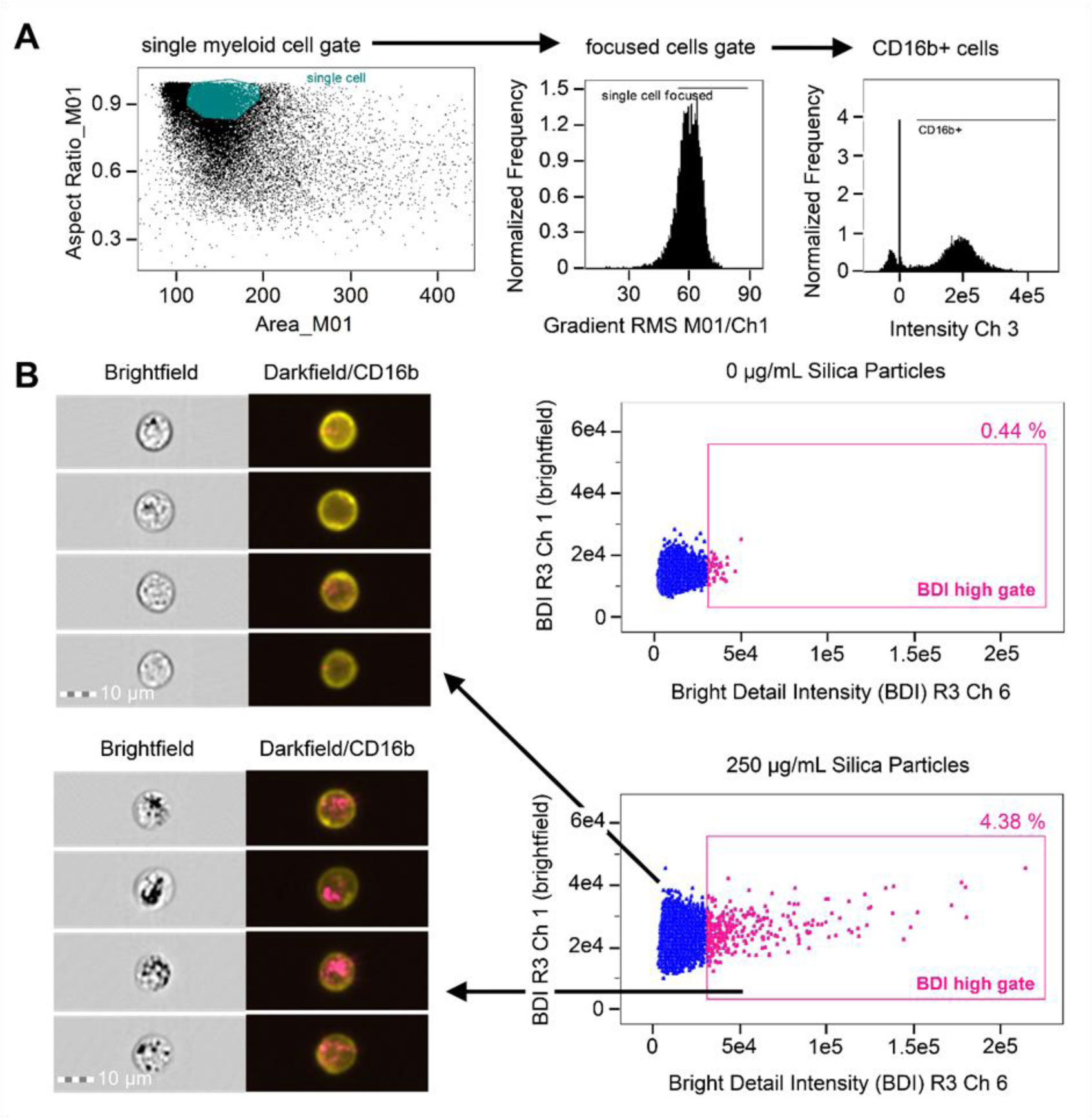









 DownLoad:
DownLoad:
